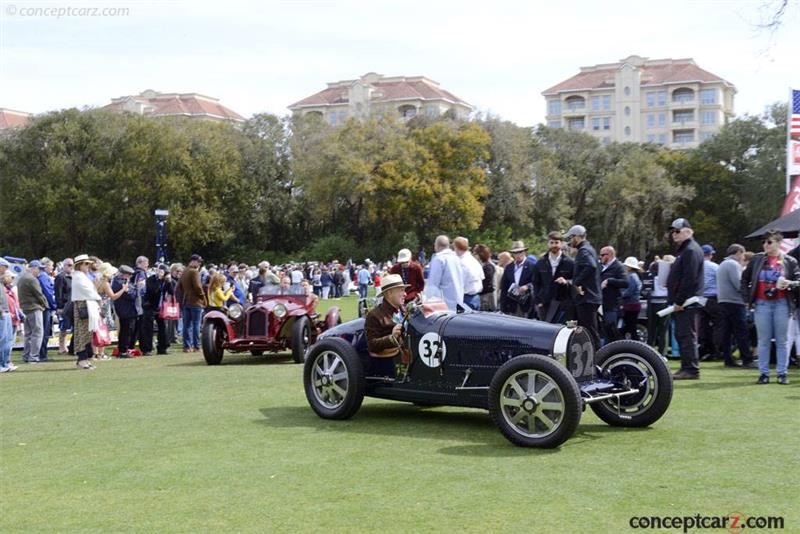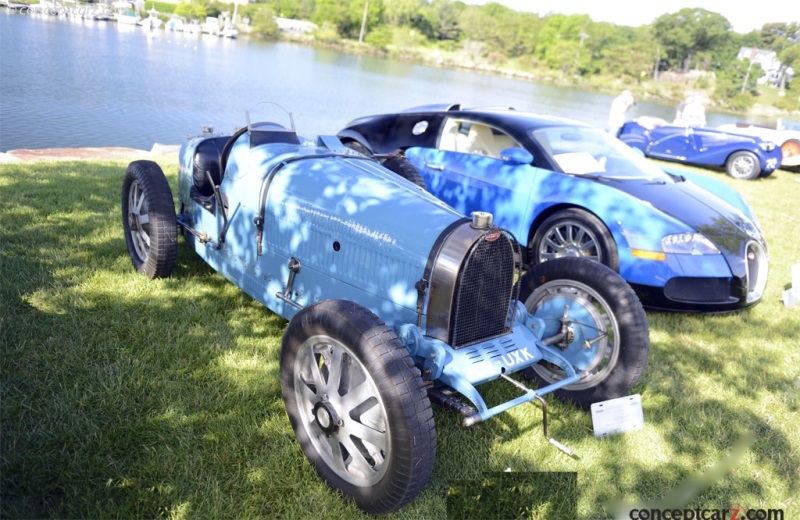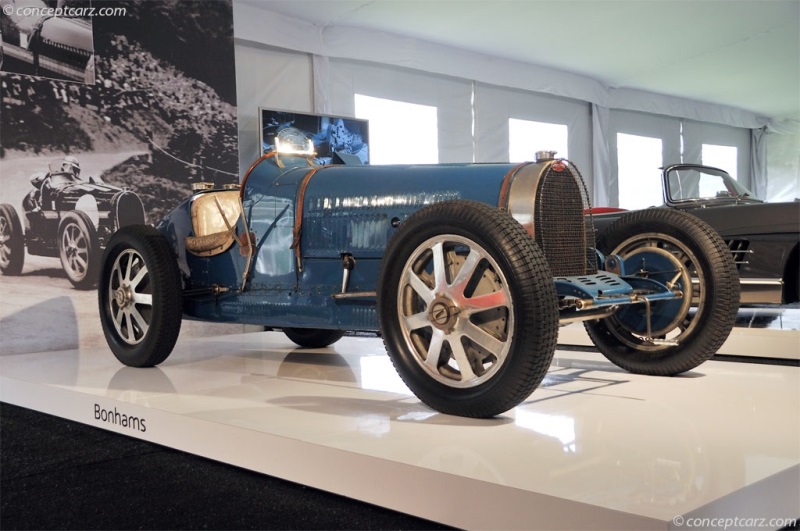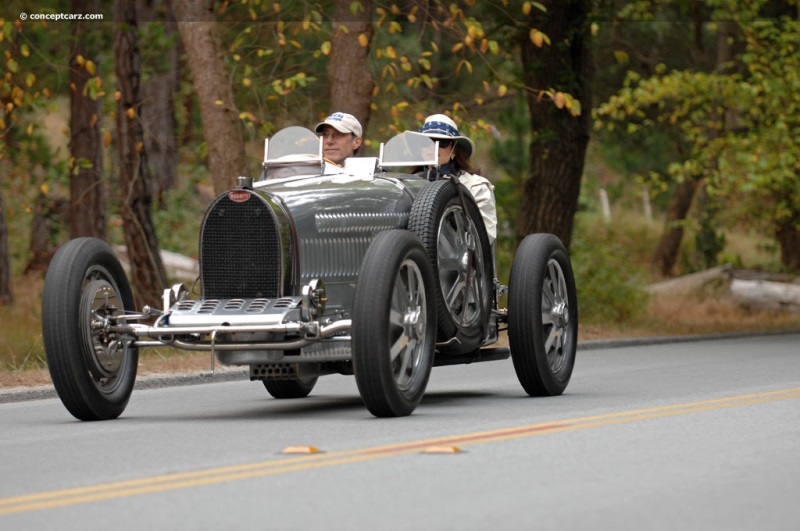The road-going Bugatti Type 50 and the Grand Prix racing Type 51 introduced twin-overhead camshafts to the Bugatti marque. Ettore Bugatti has based this new design on the American-built supercharged straight-8 Miller 91 built by Harry Amenius Miller. Miller was a carburetor and engine specialist who, along with his shop foreman Fred Offenhauser, developed an engine design in their Los Angeles-based shop in 1915 using the best elements of the successful 1913 Peugeot racing engine. The Miller straight-eight engine used a valve train with twin overhead camshafts which would be used by American track engines for many years, culminating in the highly successful Offenhauser inline four-cylinder design. The Miller engines were so successful that rule changes were implemented, bringing displacement to 121 CID, and then from 1926 to 1929, to 91 cubic inches resulting in the definitive Miller 91 model which was built in both front- and rear-drive configuration. 
Boattail Roadster
Chassis #: 51127The Packard Cable Company sponsored three Miller 91s for American National Championship racing in 1929. Two of the cars had front-drive configurations and were driven by 'Leon Duray' (his real name was George Stewart) and Ralph Hepburn. The rear-wheel-drive car was driven by Tony Gulotta. The two FWD cars were brought to Europe by Duray and records were set at Montlhéry near Paris, France, and then at Monza Autodrome in Italy.The excessive racing put a strain on both cars and 'Leon Duray' eventually ran out of money. One of the spectators was Ettore Bugatti who was so impressed by the Packard Cable Special Millers he offered Duray three Bugatti Type 43s for the Millers. The twin-overhead camshaft design of the Millers was used in the Bugatti Type 50 and Type 51. The Bugatti Type 35, in various configurations, had been in use since the early 1920s. The eight-cylinder engine was built by joining two four-cylinder engine blocks and given a three-valve configuration. The two inlet valves and one exhaust valve were operated by a single overhead camshaft. Initially displacing just under three liters, rule changes brought the displacement down to 2-liters. The nine ball bearings used to support the crank were modified to just three, however, the valve-train remained the same. Reliability issues led to the addition of two more ball bearings to support the crank. The Type 35 would eventually become one of the most successful racing cars of its era.
Boattail Roadster
Chassis #: BC-32By the close of the 1920s, the twin-cam engines proved far superior to the single overhead camshaft layout found in the Type 35. Ettore and Jean Bugatti used the Miller engine to create a new generation of Bugatti engines. They retained the angular engine of the previous straight eight generation, with the block being cast in a single piece with an integral cylinder head with a domed combustion chamber. The intake and exhaust valves were installed at a 96-degree angle. A shaft at the front of the engine operated bevel gears which drove the twin overhead camshafts. A vertical shaft with bevel gears was mounted on the intake side of the engine, and operated the Roots-type supercharger, which was located between the engine's intake and the Zenith carburetor. The engine displaced 2.3 liters and produced approximately 170 horsepower. Depending on clients' needs and purposes, the engine could be built to 1.5- and 2.0-liter displacements. All configurations were backed by a four-speed gearbox and installed in a steel ladder frame that was very similar to the Type 35s. Minor differences included the aluminum wheels with reinforced spokes, twin fuel filler caps on the boattail, and a wider radiator. The Type 35's rigid axles and suspension were retained, including the semi-elliptic leaf springs in the front and reversed quarter-elliptic leaves in the back. Five Type 51s with DOHC heads were prepared for the 1931 season. Numbers 51122-25 were works entries, and 51121 was sold to the English privateer Lord Howe. The first Bugatti Type 51 was delivered near the close of April 1931 to Count Stanislas Czaykowski in France. Two more examples were built by the factory for the French market in May and were intended for two successful amateur Bugatti drivers named Jean Gaupillat and Marcel Lehoux. By mid-year, a further six cars – 51126-51131 – had been sold to privateers. The Bugatti Type 51 with engine number 9 was for Gaupillat, and Lehoux was assigned the car with engine number 10 and chassis number 51128. Two of the cars were conversions from 1930 works Type 35BS - chassis number 51122 had been number 4962 and 51125 had been 4961. 
Boattail Roadster
Chassis #: 51127The next six cars were factory team cars. Between 1931 and 1935, a total of 40 Type 51 examples were built, most for Grand Prix competition. Considering the outdated chassis, the Bugatti Type 51 would score victories at the French and Belgian Grand Prix and two at the Monaco Grand Prix. Along with Grand Prix competition, the Type 51 was raced in sports car events where cylinder fenders and headlights were required. The first Bugatti Type 51 was delivered near the close of April 1931 to Count Stanislas Czaykowski in France. Two more examples were built by the factory for the French market in May and were intended for two successful amateur Bugatti drivers named Jean Gaupillat and Marcel Lehoux. The Bugatti Type 51 with engine number 9 was for Gaupillat, and Lehoux was assigned the car with engine number 10 and chassis number 51128. Between 1931 and 1935, a total of 40 Type 51 examples were built, most for Grand Prix competition. 
Boattail Roadster
Chassis #: BC-32Considering the outdated chassis, the Bugatti Type 51 would score victories at the French and Belgian Grand Prix, and two at the Monaco Grand Prix. Along with Grand Prix competition, the Type 51 were raced in sports car events where cylinder fenders and headlights were required.
by Daniel Vaughan | Mar 2020
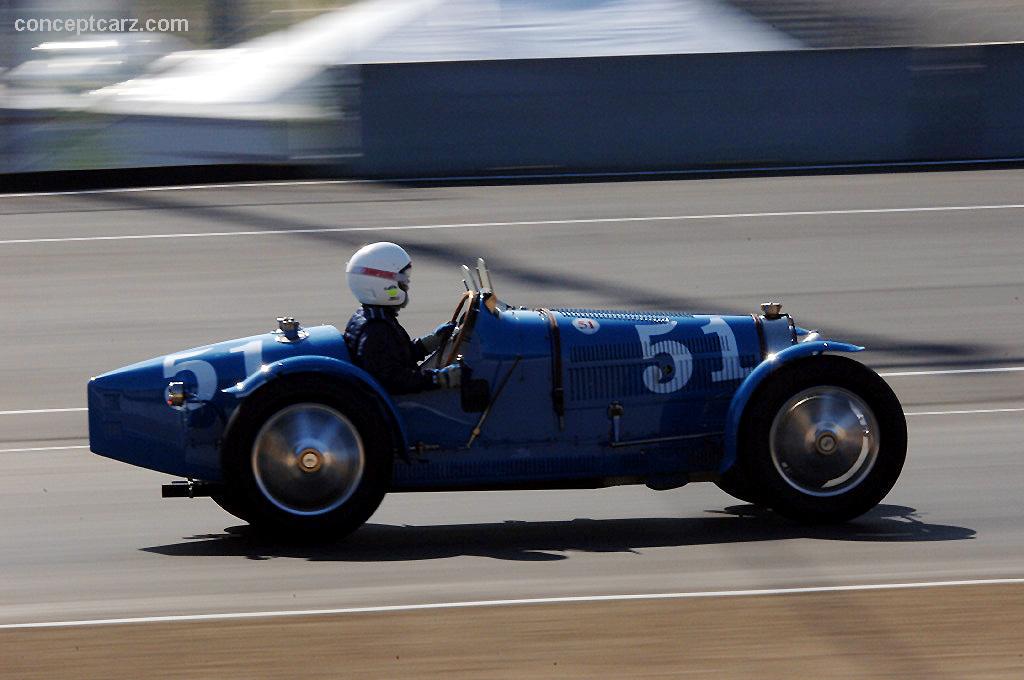
Boattail Roadster
Chassis #: 51127
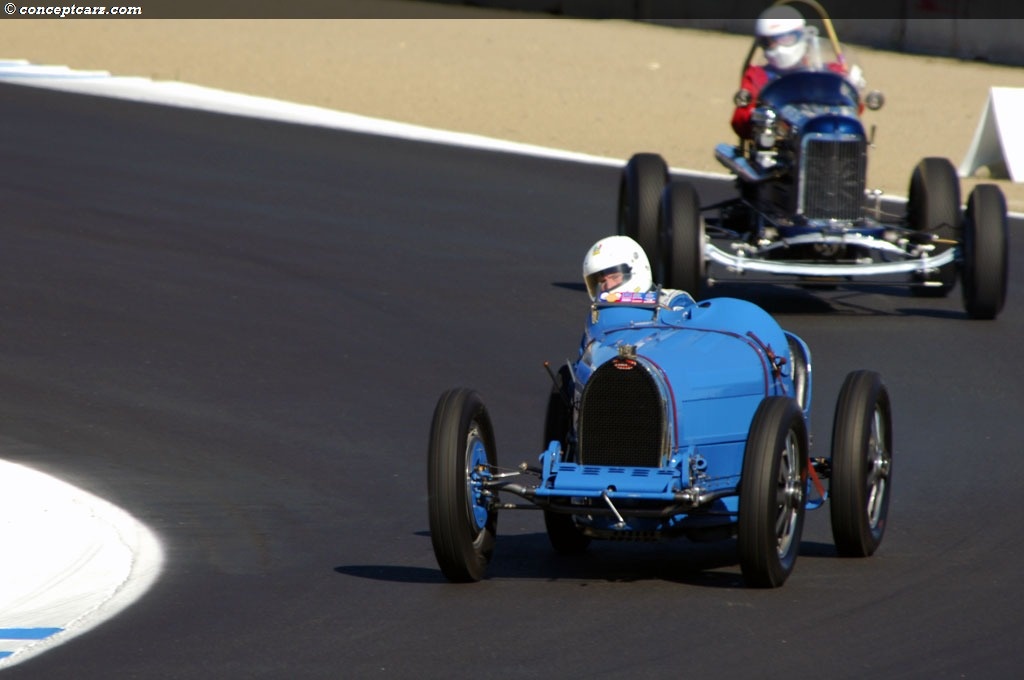
Boattail Roadster
Chassis #: BC-32
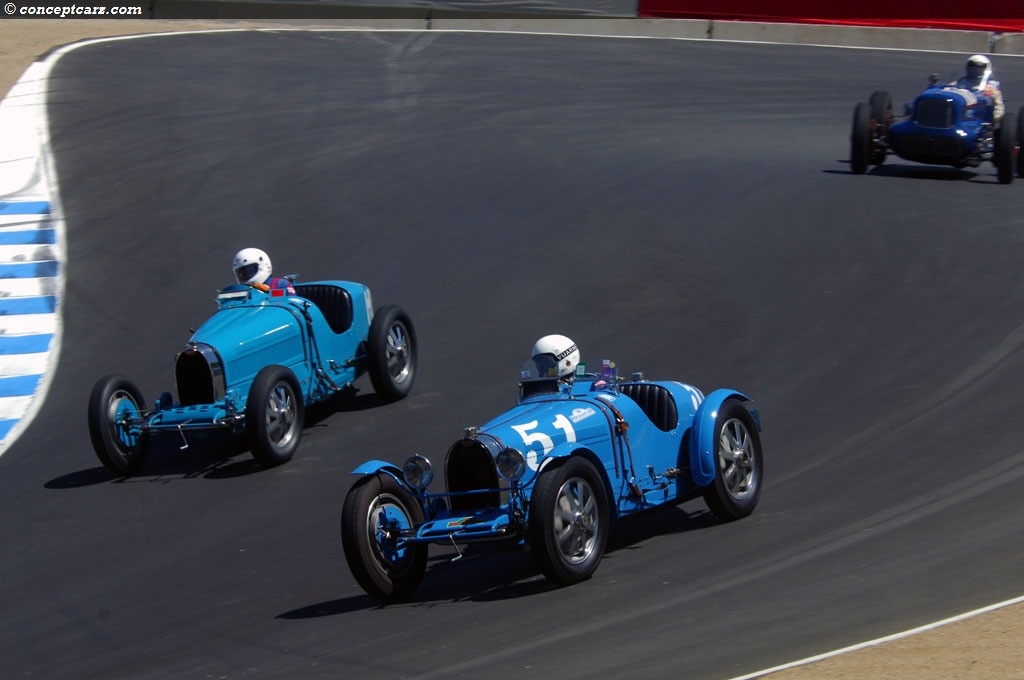
Boattail Roadster
Chassis #: 51127
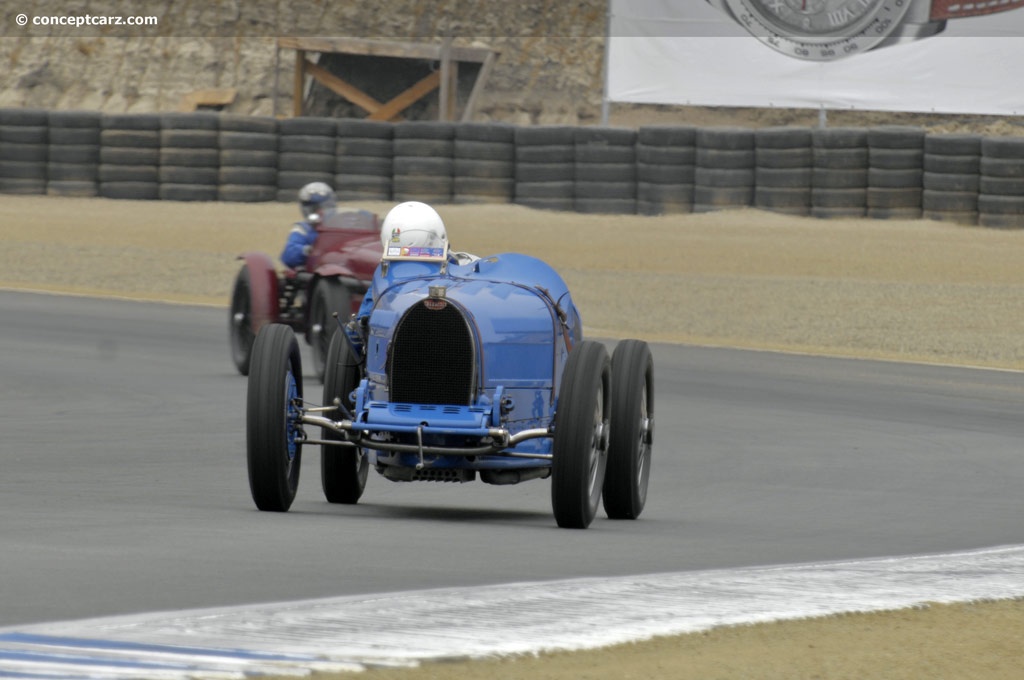
Boattail Roadster
Chassis #: BC-32
by Daniel Vaughan | Mar 2020
Related Reading : Bugatti Type 51 History
The Bugatti Type 51 was produced from 1931 through 1935 with a total of 40 examples being produced of both the T-51 and T-51A. These new racers were Ettore Bugattis attempt to replace the aging Type 35s with a more-modern racer with improved power and performance. The front-wheel drive Miller racing cars were extremely quick and Ettore wanted to know the reasons for their success. In exchange for....
Continue Reading >>
Continue Reading >>
1931 Bugatti Type 51 Vehicle Profiles
Recent Vehicle Additions
Related Automotive News

Bugatti Heritage – A year of records
Classic Bugatti cars achieved record results at auctions in 2020.
image00
Historic Bugatti cars continue to rise in value. Five automotive masterpieces from Molsheim were the five most valuable vehicles sold at auction internationally in 2020....

Bugatti's 'Dare Devils' – Combining Flying And Racing Cars
Many successful Bugatti racing drivers of the golden era were former pilots
Uncompromising racing cars and daring pilots. Bugatti is directly associated with numerous historic racing successes, in the glorious Grand Prix days of the brand....

Gooding & Company Proudly Presents 'Passion of a Lifetime' – A Masterpiece Collection of Sixteen Substantial Automobiles for Sale on 1 April 2020
Santa Monica, Calif. (22 January 2020) – Gooding %26 Company, the internationally recognized auction house, is honored to reveal the automobiles comprising the companys first-ever London sale, Passion of a Lifetime, at Somerset House in central...

Bugatti'S Dominance In 1928
90 years since the racing season packed with victories for the Type 35
From the very first day of the car manufacturer from Molsheim, the Bugatti myth was created mainly by motorsports. In this respect, 1928 was a special year for Bugatti. The...

120 years of motor sport at Mercedes-Benz take centre stage at the Goodwood Festival of Speed 2014
Addicted to Winning at this years Goodwood Festival of Speed, Mercedes-Benz looks back on some fascinating racing victories of the last 120 years
The unique motor sport heritage of the Mercedes-Benz brand is being celebrated with an exclusive i...




























